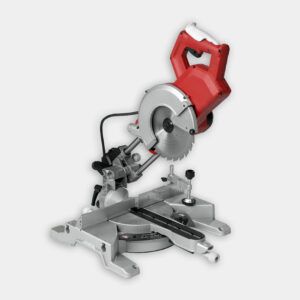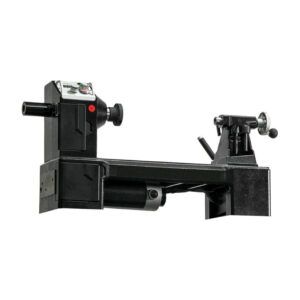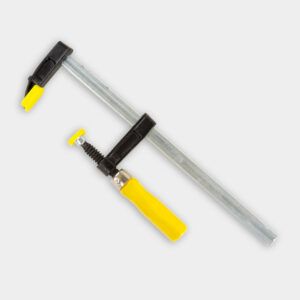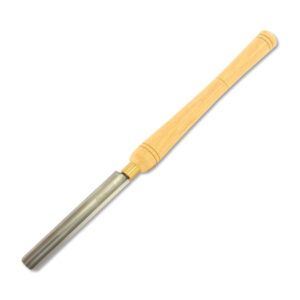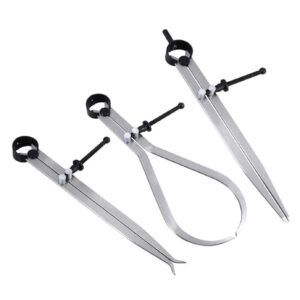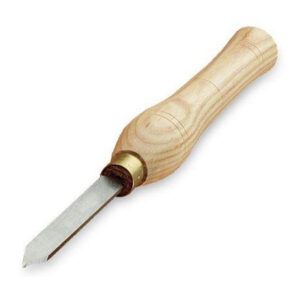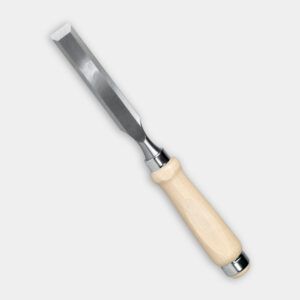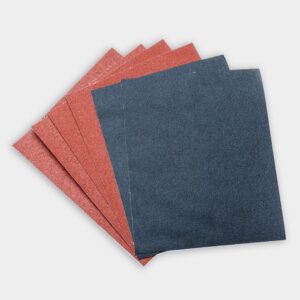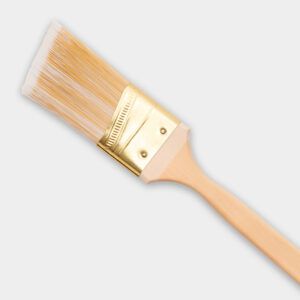We may be compensated if you purchase through links on our website. Our team is committed to delivering honest, objective, and independent reviews on home products and services.
Any baker knows how valuable a handcrafted French rolling pin is. This classic kitchen tool is known for its simplicity and effectiveness, and its tapered design allows for precise pressure application for delicate pastry work. Whether you want to give it as a handcrafted gift to the avid baker in your life or you want to craft one for your own kitchen, we’ll cover how to make a French rolling pin using a lathe. In the video above, Ask This Old House general contractor Tom Silva and host Kevin O’Connor turn a French-style rolling pin with an ornate detail in the center using a lathe.
What Makes French Rolling Pins Special?
French rolling pins are different from traditional rolling pins because they don’t have any moving parts or handles. This makes them easier to maneuver for intricate shapes and offers greater control over dough thickness. They’re lightweight and comfortable to use, and their simple design makes it easier to roll out dough.
Choosing the Right Wood for a French Rolling Pin
Part of what creates a quality rolling pin is the wood type a craftsperson uses. Bakers prefer hardwoods because they are durable and have food-safe properties. Some excellent choices include the following:
- Cherry: Known for its smooth texture and durability, cherry wood develops a rich, warm patina over time.
- Mahogany: This dense, strong wood resists warping and provides a beautiful deep color.
- Maple: Maple is a classic choice due to its toughness and fine grain, making it less porous and easier to clean.
- Walnut: Walnut’s natural dark color and hardness make it both stylish and functional, offering excellent resistance to wear.
In the video, Silva uses mahogany with a maple and mahogany veneer inlay to add visual interest.
Preparing the Rolling Pin Wood
There are a few steps you need to take before you turn the rolling pin on the lathe to round it. Below, we’ll cover how to create an inlay and cut the wood to size.
Creating an Inlay Pattern
If you’ve decided to add a decorative inlay like the one Silva creates in the video, follow these steps:
- Find the center of the main wood piece and make a 45-degree cut.
- Cut a short piece of inlay veneer the length of the diagonal with 45-degree angles on each end.
- Place the inlay in the middle of the main pieces. You can use painter’s tape to hold the pieces together as you cut them.
- Add another piece of inlay on top to form an X pattern to mark the thickness of the inlay.
- Cut that section out with a miter saw.
- Glue the pieces together using wood glue and small brushes.
- Clamp the assembly and allow it to dry overnight.
Marking the Centers
Once the glue has dried, mark the center points on each end of the wood blank so that it’s aligned when you mount the piece on the lathe. Here’s how:
- Draw diagonal lines from corner to corner on each end.
- The intersection of these lines marks the center point.
- Use a center punch to create a small indentation at each center point.
Cutting the Wood to Size
Cutting the wood to the correct dimensions before you start turning saves time and will help you create a balance. Measure the total length you want for your rolling pin and mark the wood accordingly.
- Decide on the overall length of the rolling pin.
- Use a saw to cut the wood to size.
- Make sure the ends are square to help with mounting on the lathe.
Setting Up the Lathe
Follow these steps to prepare your workpiece and lathe for safe operation:
- Wear safety gear, such as a face shield, apron, and long-sleeved shirt.
- Mount the wood blank between the spur center and the live center of the lathe.
- Adjust the tool rest to maintain about a 1/4-inch clearance from the wood.
- Start the lathe at a low speed so you can make sure the piece is aligned and balanced.
- Gradually increase the speed.
Silva recommends setting the lathe to around 1,200 RPM for this project.
Turning the Rolling Pin
Now that you have the lathe set up, you can start to shape your French rolling pin.
Roughing Out the Shape
This step kicks off the carving process to create a basic shape.
- Use a roughing gouge to begin rounding the wood.
- Hold the tool firmly against the tool rest and move it smoothly along the length of the wood.
- Gradually remove material until you achieve a cylindrical shape and your desired diameter.
Creating the Taper
A French rolling pin has a characteristic taper to it. Here’s how to create one:
- Mark the length of the center. Silva measures 12 inches for the main rolling surface.
- Measure equal lengths for both handles. Silva measures 4-1/4 inches on each end for the handles.
- Use a parting tool or caliper to bring the ends down to about 1 inch in diameter.
- Employ a skew chisel to create a gentle taper from the center to the ends.
Silva recommends having advanced carpentry skills to use skew chisels because they can cause kickback. Keep the bevel in contact with the wood and avoid catching the tip.
Adding Decorative Elements
To make your rolling pin unique, consider adding decorative elements, such as small grooves or beads. You can add these using a detail gouge. Make sure that any of the decorative elements are smooth to the touch, and place your designs in spots where they won’t compromise the pin’s primary function.
Sanding and Finishing
Follow the steps below to create a smooth, polished pin surface. Always remember to use a paper towel on the lathe. Paper towels will break away if they get caught on the lathe but a cloth won’t.
- Sand the entire rolling pin.
- Apply a food-safe finish using a paper towel while the lathe is running at low speed.
- Allow the finish to dry for about 15 minutes.
- Buff the surface with a clean paper towel to get a polished sheen.
Caring for Your French Rolling Pin
Now you’re ready to start rolling some dough. Here are a few ideas so that your handcrafted French rolling pin lasts for years:
- Hand wash it with mild soap and warm water.
- Dry it thoroughly after each use.
- Occasionally apply food-grade mineral oil to maintain the wood.
- Store it in a cool, dry place away from heat sources.
- Avoid cleaning it in the dishwasher, soaking it in water, and exposing it to direct sunlight.
Possible Repairs
Even with proper care, accidents happen. We’ll cover what you can do if you run into some common issues:
- Cracks: Fill small cracks with wood filler and sand smooth.
- Scratches: Sand lightly and reapply the finish.
- Warping: Store the rolling pin flat to prevent warping. If it does warp, lightly wet it and clamp it back into shape.
Resources
Silva used a REVO 12|16 110V lathe, which is manufactured by Laguna Tools. The tools Silva used to actually turn the rolling pin can be found at any specialty woodworking store.
To create the custom piece of wood for turning, Silva used leftover pieces of mahogany and maple that he had from other projects, but that lumber can be found at most home centers and woodworking stores. To cut the in-lays and secure it all together, Silva used a Kapex KS120 sliding compound miter saw by Festool and some wood glue from Gorilla Glue.
To finish the rolling pin, Silva and O’Connor applied Odie’s Oil.
The other tools and materials Silva and O’Connor used to turn the rolling pin, including the sandpaper and coping saw, can be found at home centers.
